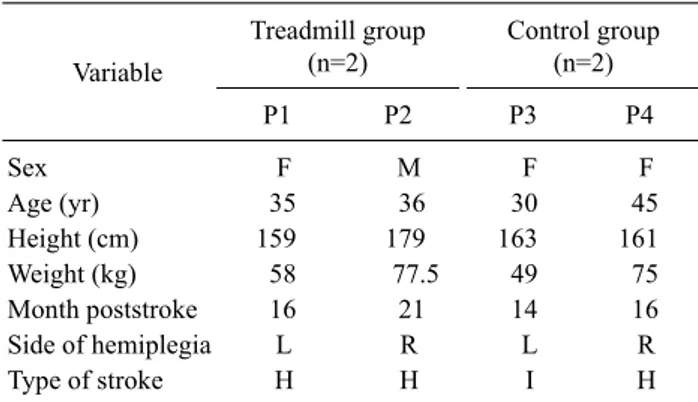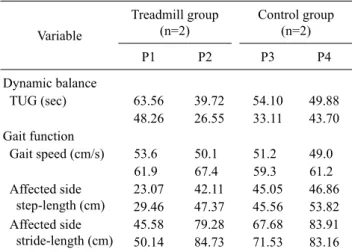Received: 24 April, 2013 Revised: 27 May, 2013 Accepted: 30 May, 2013 Corresponding author: Byounghee Lee
Department of Physical Therapy, College of Health and Welfare, Sahmyook University, 815 Hwarang-ro, Nowon-gu, Seoul 139-742, Republic of Korea Tel: 82-2-3399-1634 Fax: 82-2-3399-1639 E-mail: 3679@syu.ac.kr
This is an Open-Access article distributed under the terms of the Creative Commons Attribution Non-Commercial License (http://creativecommons.org/licens es/by-nc/3.0) which permits unrestricted non-commercial use, distribution, and reproduction in any medium, provided the original work is properly cited.
Copyright © 2013 Korean Academy of Physical Therapy Rehabilitation Science
pISSN 2287-7576 Phys Ther Rehabil Sci
eISSN 2287-7584 2013, 2 (1), 39-43
www.jptrs.org
The effects of treadmill training on dynamic balance and gait function in stroke patients: a pilot randomized controlled trial
Eun Jung Chung a , Byounghee Lee b
a
Department of Physical Therapy, Andong Science College, Andong, Republic of Korea
b


